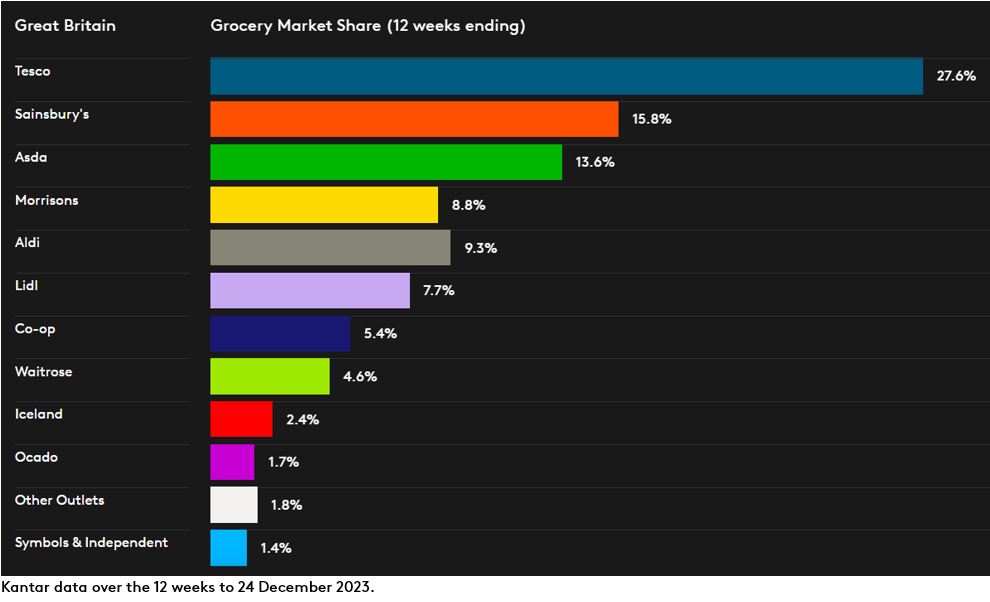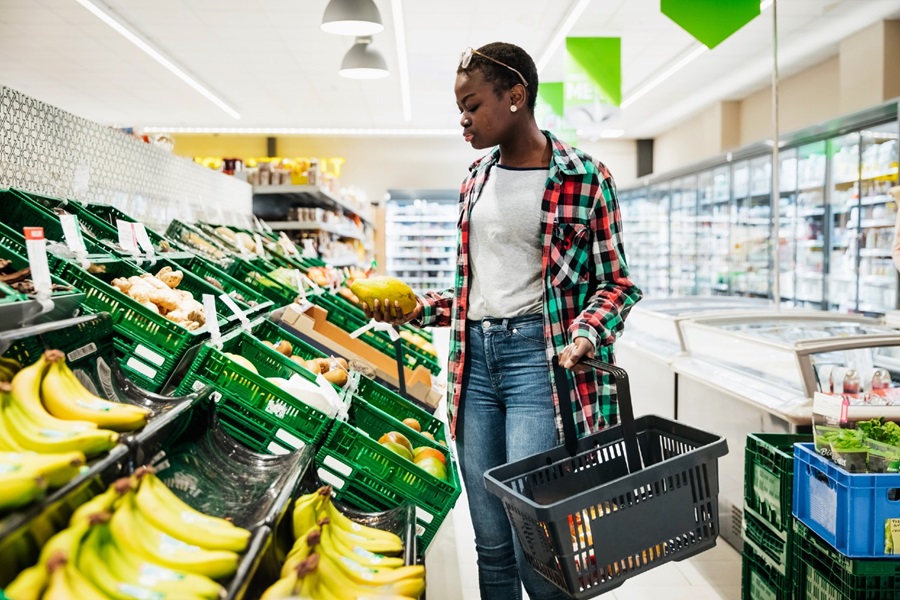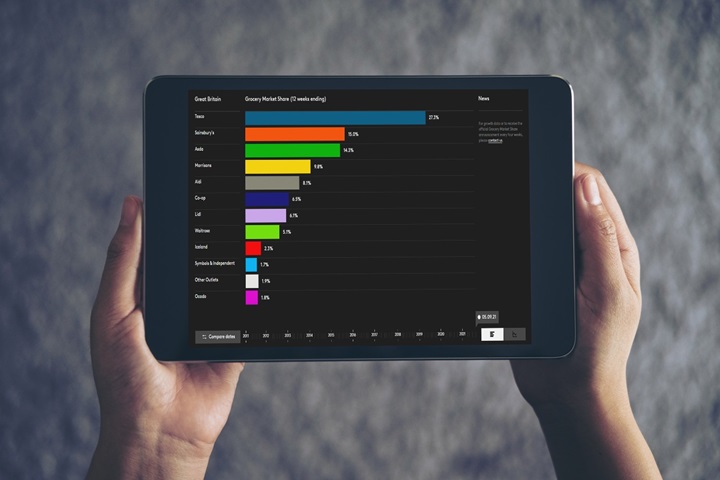Supermarkets saw their highest level of transactions in December since 2019, according to our latest data. Britons made 488 million trips to the supermarkets over the four weeks to 24 December – 12 million more than last year and the largest number at Christmas since pre-pandemic times. A record £13.7 billion passed through the tills, with the average household spending an all-time high of £477 across the month, an increase of £28 on 2022. Total take-home grocery sales grew in value by 7.0% while the number of items bought rose by 2%.
As we expected, this Christmas was a whopper. Friday 22 December turned out to be the most popular shopping day, when just over 25 million trips were made and consumers spent £803 million in physical stores – that’s 85% more than the average Friday in 2023. Online’s share of the market held steady at 11.6%, as nearly one in five households got a delivery in for the big day.
Inflation falls sharply helped by returning promotions
Grocery price inflation fell to 6.7% in December, its lowest level since April 2022, but many consumers are still feeling the pinch. The rate of inflation is coming down at the fastest pace we have ever recorded, but consumers are still facing pretty hefty pressures on their budgets. Retailers were clearly working hard during the festive period to offer best value and win over shoppers, and promotions were central to their strategy. Nearly one third of all spend in the four weeks to Christmas Eve was made on items with some kind of offer, the highest level since December 2020 and £823 million more than last year.
Consumers’ appetite for the traditional Christmas dinner was particularly strong in 2023, with volumes of parsnips, sprouts and potatoes up 12%, 9% and 8% respectively, and chilled gravy up by 11%. Festive meats including pigs in blankets, sausages, hams and, of course, turkeys were also up by 6% collectively. We’re creatures of habit when it comes to Christmas and our data shows that the classic festive plate remains much the same. However, mince pies and Christmas puddings did buck the trend. They were less popular this year, with volumes falling by 4% and 7% respectively, but that isn’t to say we’ve lost our sweet tooth. Fresh cream was up by 5% across the month, so dessert was still very much on the menu.
Premium own label sales hit new high
Tesco, Sainsbury’s, Asda, Morrisons and Waitrose accounted for a combined market share of 70% during the 12 weeks to 24 December. The traditional retailers always tend to do well in the run up to Christmas and this year was no exception. Supermarkets saw especially strong performances for their own-label lines, with sales of premium ranges like Sainsbury’s Taste the Difference and Tesco Finest surging by 11.9% compared with last year to hit £790 million – accounting for 5.7% of all grocery sales. Branded sales rose by 6.0% during the same period.
Sainsbury’s reached its highest market share since December 2020 at 15.8%, pushing up its sales by 9.3%. Tesco gained 0.1 percentage points of share to now hold 27.6% of the market and grew sales by 7.5%.
Lidl and Aldi continue to be the fastest growing grocers year on year and the discounters hit their highest ever market shares for the Christmas period. Lidl increased sales by 13.8%, while Aldi saw growth of 9.9%. Lidl’s market share rose by 0.5 percentage points to 7.7% and Aldi’s grew 0.2 percentage points, meaning its market share now stands at 9.3%.
Co-op’s market share now stands at 5.4%, marking a 3.8% increase since last year. Waitrose, meanwhile, holds 4.6% of the market, having seen a 1% rise in the number of shoppers over the 12-week period. Frozen specialist Iceland’s sales increased by 2.9%, with its market share now at 2.4%, and Asda accelerated sales growth to 3.4% to take 13.6% of the market. Spending at Morrisons increased by 3.2%, with share now standing at 8.8%.
Online purchases grew slightly ahead of the market during the four weeks to 24 December versus last year, up by 7.5%. Spending at online-only retailer Ocado grew by 5.5%, though its share of the market held steady at 1.7%.



